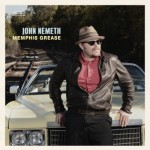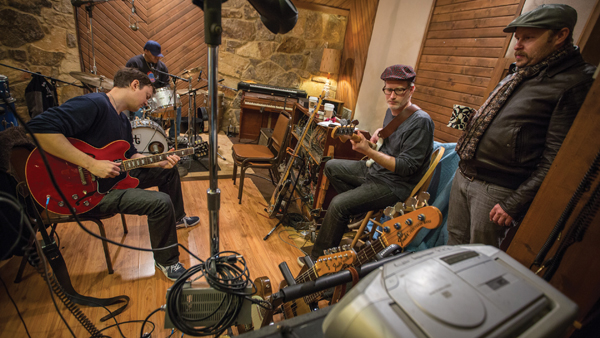PRE-PRODUCTION
What was your preproduction like on this project?
I demoed these songs with my road band Nick Fishman, Tommy Folen, A.C. Myles, Joe Meyer, Elliot Sowell and Smokey Davis while living in Oakland.
How did you choose the studio?
I chose this studio based upon their selection of vintage recording gear.
For more Performer Mag Studio Diaries, click here.
PRODUCTION
What kind of sound were you looking for and how did you achieve it?
We wanted the classic Memphis soul sound of Stax, Hi and American Studios. We recorded the rhythm section, vocals and harp all live to an 8-track 1″ Scully tape machine at Electraphonic and mixed it to 1/4″ tape at Ardent. The other huge part of the sound is the studio band, The Bo-Keys. The drummer Howard Grimes is a legend who played on classic cuts by Al Green, OV Wright, Ann Peebles, and Willie Mitchell.
Did you use any special gear or recording techniques on this one?
Electraphonic Recording has a lot of great, unique vintage equipment. It is state-of-the-art circa 1970. Lots of classic guitar and bass amplifiers, vintage keyboards, mics and outboard gear. A lot of the sound of the record is [captured on] the Scully 1″ 8-track machine. It was the same type of machine used in the ’60s at Stax, Fame Studio in Muscle Shoals and American Studio in Memphis. The recording process at Electraphonic is the same as how records were made in the ’60s and early-’70s. The musicians would listen to the demos, put down the rhythm section tracks live with the vocals and harp and then horns, background vocals and any other overdubs like percussion would be added.
My vocals were cut on a RCA 77DX ribbon mic through a Langevin 5116 tube mic pre. The Langevin 5116 is the mic amplifer used in a lot of custom recording consoles like Bradley’s Barn in Nashville and Chess in Chicago.
What was your philosophy on live, fullband takes versus individual tracking?
I love the adrenaline rush of tracking live. I need to feel the energy of the band in the studio. My best vocal takes are the usually on the first or second pass. Very rarely will I attempt a third cut of the song. I have never made a record without cutting keys, guitar, drums, bass, harp and vocals live. I have always tracked horns as sections and background vocals as sections, though.
Any special guests?
Special guests performing background vocals were Susan Marshall, Reba Russell and the Barnes Brothers: Christopher, Calvin and Courtney.
What did you try to accomplish in the studio that you’re not able to do live?
Using the vintage gear was the accomplishment. Transporting this type of equipment into a performance hall would have been difficult.
POST-PRODUCTION
How did you handle final mixing and mastering?
We took the 1″ multitrack tapes over to Ardent in Memphis where John Hampton mixed it to a 1/4″ MCI machine. They have an amazing collection of outboard gear there including Fairchild compressors and EMT plate reverbs. Ardent Studio has been around since the ’60s and was the “overflow” studio for Stax. Many huge records that were recorded at Stax and in Muscle Shoals were mixed at Ardent. Brad Blackwood at Euphonic Masters in Memphis mastered the record from the 1/4″ master tapes.
Any special packaging?
The recording will be released on vinyl; the vinyl master was cut on the same lathe used at Stax. Brad Blackwood also made a special master for iTunes.
For more, follow John online at JohnNemeth.com.
 ALBUM INFO & CREDITS
ALBUM INFO & CREDITS
Artist: John Németh
Album: Memphis Grease
Recording Studios: Recorded at Electraphonic Recording and Mixed at Ardent Studios
Record Label: Blue Corn Music
Release date: March 25, 2014
Producer: Scott Bomar
Engineers: Kevin Houston and Scott Bomar
Assistant Engineer: Justin Hess
Mix Engineer: John Hampton
Assistant Mix Engineer: Adam Hill
Mastered by: Brad Blackwood at Euphonic Masters
KEY RECORDING GEAR
· MCI 416B Recording Console
· Scully 280 1″ 8-Track Tape Machine
· RCA 77DX mic
· Langevin 4116 mic pres
· Magnatone M15 guitar amplifier
· Custom C&C Player Date Drum Set
· Fairchild Tube Limiters
· The harmonica was played through a 1950s Astatic JT30 mic and a 1968 Earth Sound Research PA with two 4×12 Kustom Cabinets
Have a unique studio story to share? Email [email protected].
photos courtesy of Shore Fire Media


